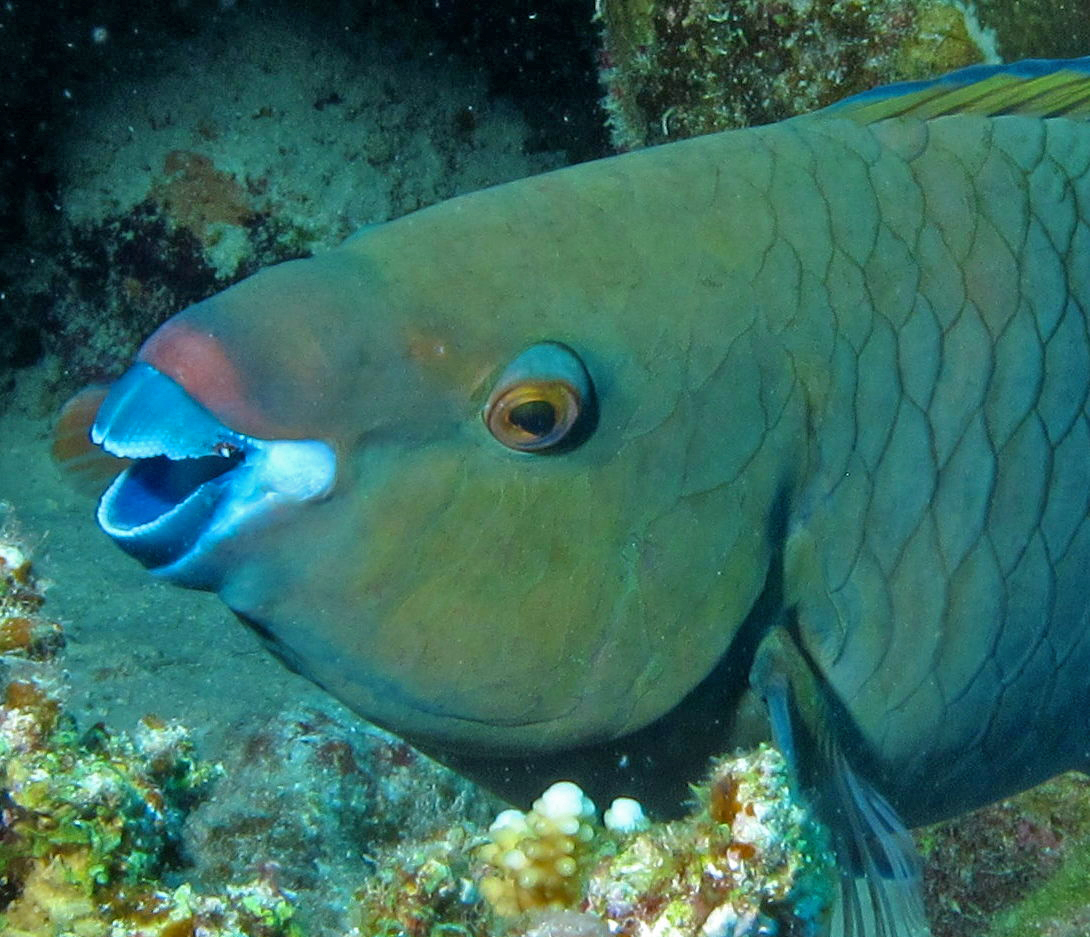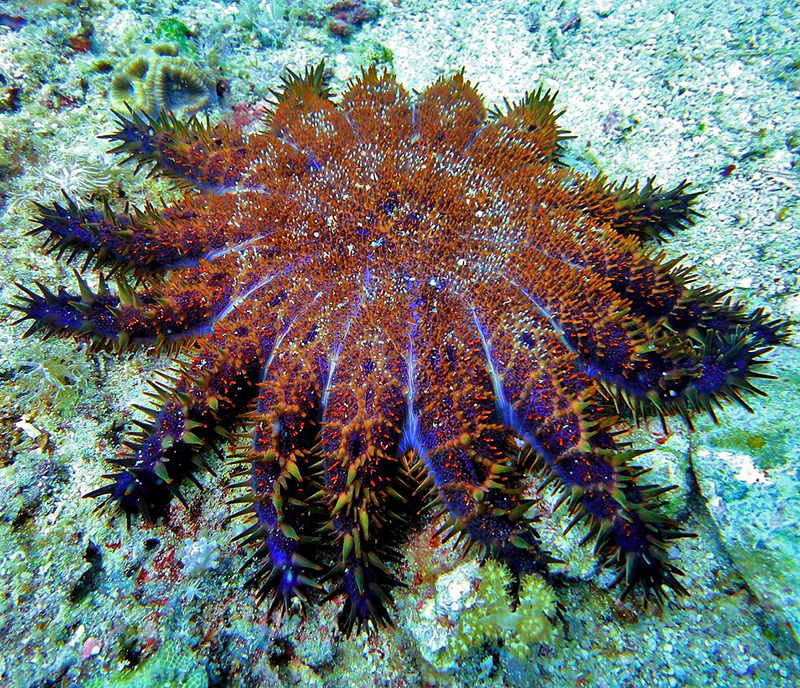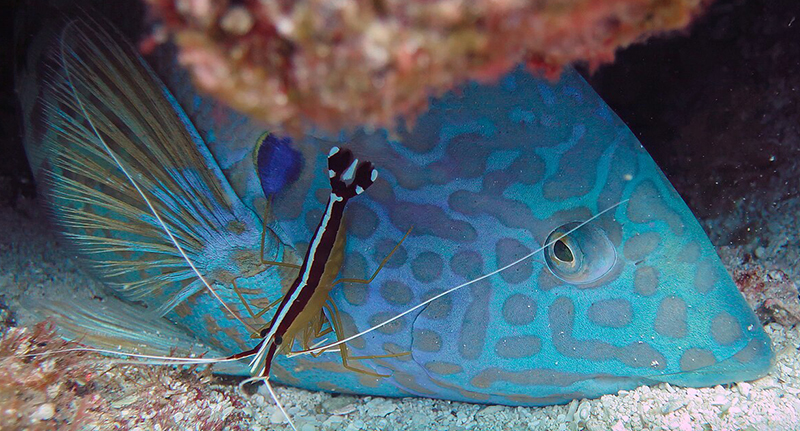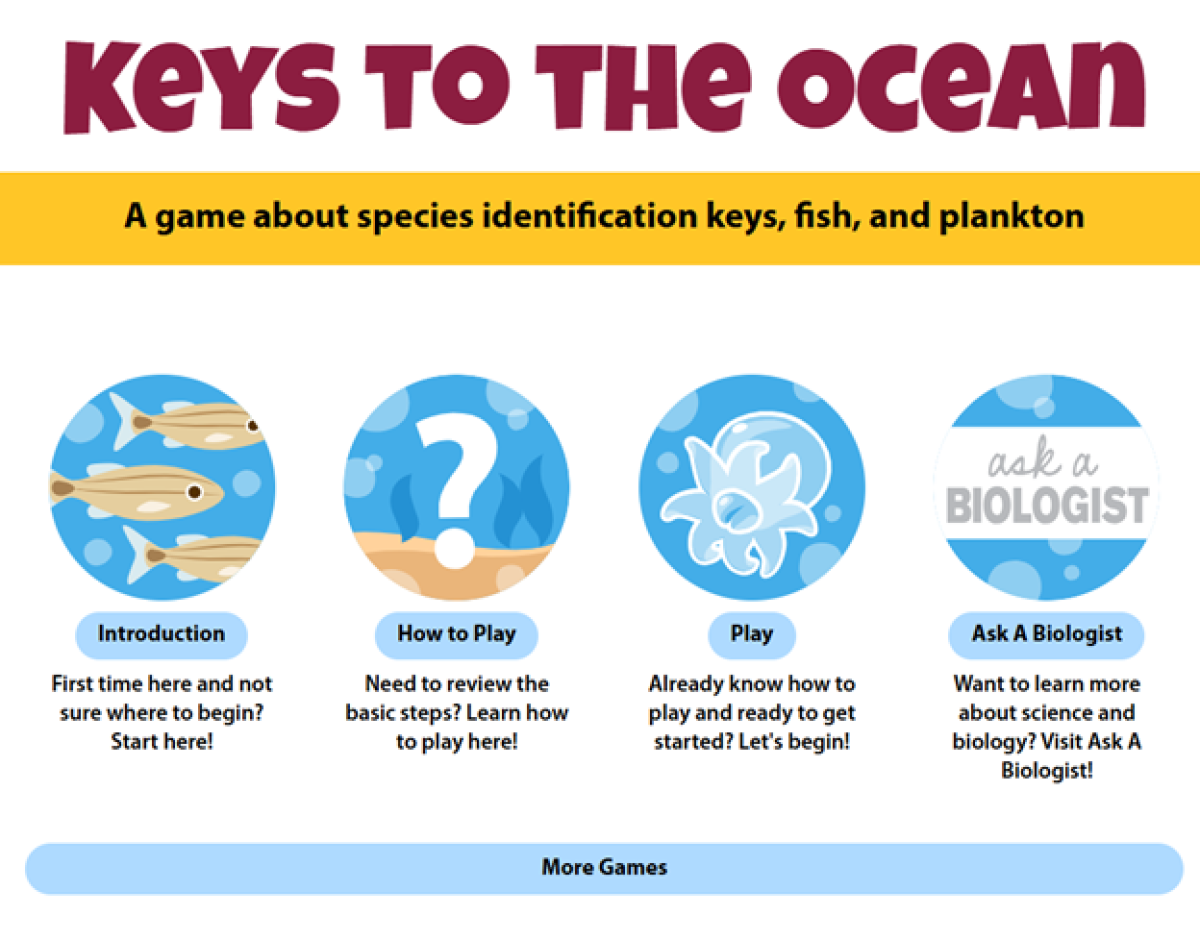Coral reef diversity
Coral reefs are one of the most biodiverse ecosystems on earth. They are home to 25% of all life in the ocean, which amounts to over 1 million species of organisms. Many of the animal species that live here have wild stories. Some have likely been a part of your life in ways you wouldn’t expect. Others have formed complicated relationships with their neighbors.
I enjoy long walks on the…fish poop?

If you’ve ever been to a white or pink sand beach, chances are that you were standing on piles and piles of fish poop. Most of which probably came from parrotfish. They are corallivores, meaning they feed on corals.
Parrotfish have beak-like mouths and strong teeth. They scrape food from the ocean floor, sometimes swallowing bits of the corals' limestone skeleton. Later, they poop out these indigestible bits as sand. The sand eventually washes up onto beaches where we can see and enjoy it. Sand is also made naturally from the bodies of many other marine organisms including clams, sea snails, and sea sponges.
Ravenous roamers

Reef herbivores have the crucial role of eating algae. Corals are always battling algae for sunlight and room to grow. One of these reef herbivores is the mighty sea urchin. Urchins roam the sea floor munching on algae and seagrass, freeing up space for coral polyps to settle. Without their help, young corals may struggle to find suitable spots to grow.
Another hungry resident is the crown-of-thorns starfish. Unlike their urchin cousins, these large sea stars have a big appetite for coral polyps. Extending their stomachs out of their mouths, they release chemicals to dissolve polyps. After they finish eating, they leave behind bare coral skeleton that algae can grow on.
Cleaning stations
If things get messy it might be time to stop by a cleaning station. Keep an eye out for the signal. A cleaner shrimp waving its antennae is letting you know they’re open for business. Tucked away under a rock, the shrimp is hard at work. It plucks parasites and dead skin from its many clients.

Even animals that would normally eat them stop by for a cleaning. The shrimp’s signal lets everyone know they are not a meal. Grooming others gives them a chance to eat safely while providing a service. Just another example of the complex symbiotic partnerships you will find on a reef.
Read more about: Cruising Around Coral Reefs
Bibliographic details:
- Article: Animals of coral reefs
- Author(s): Dr. Biology
- Publisher: Arizona State University School of Life Sciences Ask A Biologist
- Site name: ASU - Ask A Biologist
- Date published:
- Date accessed:
- Link: https://askabiologist.asu.edu/coral-reef-animals
APA Style
Dr. Biology. (). Animals of coral reefs. ASU - Ask A Biologist. Retrieved from https://askabiologist.asu.edu/coral-reef-animals
Chicago Manual of Style
Dr. Biology. "Animals of coral reefs". ASU - Ask A Biologist. . https://askabiologist.asu.edu/coral-reef-animals
Dr. Biology. "Animals of coral reefs". ASU - Ask A Biologist. . ASU - Ask A Biologist, Web. https://askabiologist.asu.edu/coral-reef-animals
MLA 2017 Style

Want to learn more about different species of fish or plankton you might find around coral reefs? Visit Keys to the Ocean and learn how to key out fish species in this identification challenge game!
Be Part of
Ask A Biologist
By volunteering, or simply sending us feedback on the site. Scientists, teachers, writers, illustrators, and translators are all important to the program. If you are interested in helping with the website we have a Volunteers page to get the process started.


